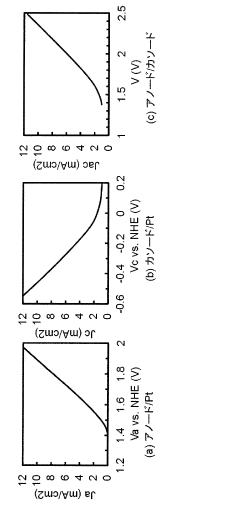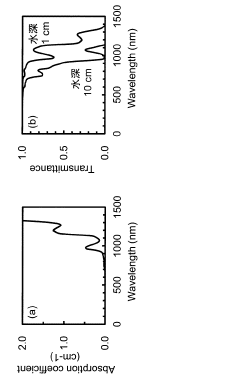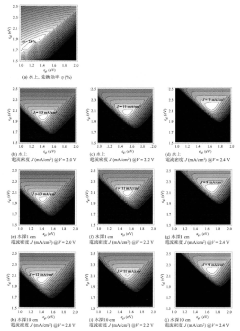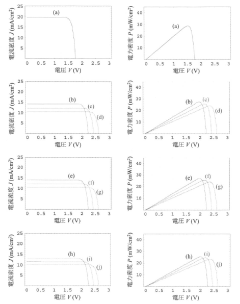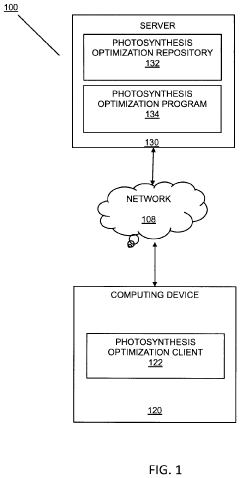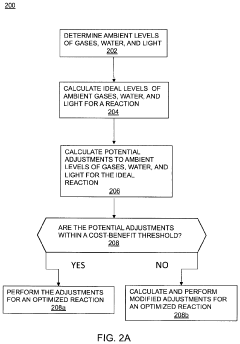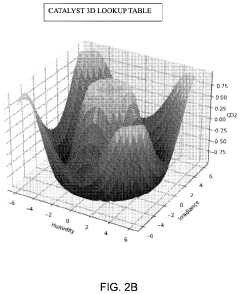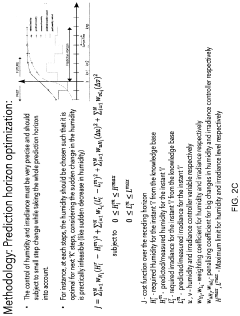Artificial Photosynthesis-informed urban resilience strategies.
SEP 4, 202510 MIN READ
Generate Your Research Report Instantly with AI Agent
Patsnap Eureka helps you evaluate technical feasibility & market potential.
Artificial Photosynthesis Background and Objectives
Artificial photosynthesis represents one of the most promising biomimetic technologies, drawing inspiration from nature's elegant process of converting sunlight, water, and carbon dioxide into energy-rich compounds. The concept emerged in the early 20th century but gained significant momentum in the 1970s during the global energy crisis. Since then, research has evolved from basic understanding of natural photosynthetic mechanisms to developing artificial systems capable of similar energy conversion processes with higher efficiency.
The technological evolution trajectory shows three distinct phases: fundamental research (1970s-1990s), prototype development (2000s-2010s), and current application-oriented research (2010s-present). Each phase has contributed to our understanding of light harvesting, charge separation, and catalytic reactions—the three fundamental processes underpinning both natural and artificial photosynthesis.
Recent advancements in nanotechnology, materials science, and computational modeling have accelerated progress in this field, enabling the design of more efficient catalysts, light-absorbing materials, and integrated systems. The convergence of these technologies has pushed artificial photosynthesis beyond laboratory curiosity toward practical applications with real-world impact potential.
The primary objective of artificial photosynthesis research in urban resilience contexts is to develop sustainable, decentralized energy and resource systems that can enhance cities' adaptive capacity to environmental stresses. Specifically, these technologies aim to simultaneously address multiple urban challenges: renewable energy generation, carbon capture, water purification, and potentially even food production in integrated systems.
Secondary objectives include reducing urban heat island effects through energy-efficient processes, creating closed-loop resource systems that minimize waste, and developing modular solutions that can be deployed at various scales—from building-integrated systems to neighborhood infrastructure. These objectives align with broader urban sustainability goals while specifically enhancing resilience against climate change impacts, resource scarcity, and energy insecurity.
The technical goals for artificial photosynthesis in urban applications focus on achieving higher solar-to-fuel conversion efficiencies (currently targeting 10-15%), developing durable systems capable of operating under variable urban conditions, and creating scalable designs that can be manufactured cost-effectively. Additional performance targets include reducing water consumption, minimizing rare material dependencies, and ensuring safe operation in densely populated environments.
As cities worldwide face increasing climate-related stresses, artificial photosynthesis represents a transformative approach to urban resilience—potentially enabling self-sufficient energy communities, carbon-negative infrastructure, and adaptive resource systems that respond dynamically to changing environmental conditions.
The technological evolution trajectory shows three distinct phases: fundamental research (1970s-1990s), prototype development (2000s-2010s), and current application-oriented research (2010s-present). Each phase has contributed to our understanding of light harvesting, charge separation, and catalytic reactions—the three fundamental processes underpinning both natural and artificial photosynthesis.
Recent advancements in nanotechnology, materials science, and computational modeling have accelerated progress in this field, enabling the design of more efficient catalysts, light-absorbing materials, and integrated systems. The convergence of these technologies has pushed artificial photosynthesis beyond laboratory curiosity toward practical applications with real-world impact potential.
The primary objective of artificial photosynthesis research in urban resilience contexts is to develop sustainable, decentralized energy and resource systems that can enhance cities' adaptive capacity to environmental stresses. Specifically, these technologies aim to simultaneously address multiple urban challenges: renewable energy generation, carbon capture, water purification, and potentially even food production in integrated systems.
Secondary objectives include reducing urban heat island effects through energy-efficient processes, creating closed-loop resource systems that minimize waste, and developing modular solutions that can be deployed at various scales—from building-integrated systems to neighborhood infrastructure. These objectives align with broader urban sustainability goals while specifically enhancing resilience against climate change impacts, resource scarcity, and energy insecurity.
The technical goals for artificial photosynthesis in urban applications focus on achieving higher solar-to-fuel conversion efficiencies (currently targeting 10-15%), developing durable systems capable of operating under variable urban conditions, and creating scalable designs that can be manufactured cost-effectively. Additional performance targets include reducing water consumption, minimizing rare material dependencies, and ensuring safe operation in densely populated environments.
As cities worldwide face increasing climate-related stresses, artificial photosynthesis represents a transformative approach to urban resilience—potentially enabling self-sufficient energy communities, carbon-negative infrastructure, and adaptive resource systems that respond dynamically to changing environmental conditions.
Market Analysis for Urban Resilience Applications
The market for artificial photosynthesis-informed urban resilience strategies is experiencing significant growth as cities worldwide face increasing environmental challenges. Current market valuations indicate that urban resilience solutions represent a rapidly expanding sector, with projections suggesting the global market will reach approximately $326 billion by 2030. Within this broader market, technologies leveraging artificial photosynthesis principles are creating a specialized niche with distinctive value propositions for urban environments.
Urban centers globally are demonstrating increased demand for integrated solutions that address multiple resilience challenges simultaneously. Municipal governments, particularly in regions experiencing severe climate impacts, are allocating larger portions of their infrastructure budgets toward adaptive technologies. This trend is especially pronounced in coastal cities and regions experiencing extreme weather events, where traditional infrastructure approaches are proving inadequate.
The primary market segments for artificial photosynthesis-informed resilience strategies include municipal governments, urban development corporations, sustainability-focused real estate developers, and climate adaptation funds. These stakeholders are increasingly recognizing the potential of biomimetic approaches that can simultaneously address carbon capture, energy generation, and urban cooling—key benefits that artificial photosynthesis technologies can deliver.
Regional market analysis reveals varying adoption patterns. European cities lead in implementation, driven by ambitious climate neutrality targets and supportive policy frameworks. North American markets show strong growth potential but face fragmented regulatory environments. The Asia-Pacific region represents the fastest-growing market segment, with Chinese and Indian megacities investing heavily in innovative urban sustainability solutions.
Competitive analysis indicates that the market remains relatively unconsolidated, with a mix of established engineering firms, cleantech startups, and academic spinoffs. This fragmentation presents both opportunities and challenges for market entrants. The most successful players are those offering scalable solutions that integrate with existing urban infrastructure while providing measurable resilience benefits.
Key market drivers include increasing climate change impacts on urban areas, rising energy costs, stringent emissions regulations, and growing public demand for sustainable urban environments. Barriers to market penetration include high initial implementation costs, technological complexity, and the need for cross-sector collaboration between traditionally separate domains such as energy, water management, and urban planning.
Customer willingness-to-pay analysis suggests that solutions demonstrating multiple co-benefits (carbon reduction, energy savings, improved public health outcomes) achieve significantly higher market acceptance than single-purpose technologies. This underscores the importance of developing comprehensive value propositions that address the multifaceted challenges facing urban environments.
Urban centers globally are demonstrating increased demand for integrated solutions that address multiple resilience challenges simultaneously. Municipal governments, particularly in regions experiencing severe climate impacts, are allocating larger portions of their infrastructure budgets toward adaptive technologies. This trend is especially pronounced in coastal cities and regions experiencing extreme weather events, where traditional infrastructure approaches are proving inadequate.
The primary market segments for artificial photosynthesis-informed resilience strategies include municipal governments, urban development corporations, sustainability-focused real estate developers, and climate adaptation funds. These stakeholders are increasingly recognizing the potential of biomimetic approaches that can simultaneously address carbon capture, energy generation, and urban cooling—key benefits that artificial photosynthesis technologies can deliver.
Regional market analysis reveals varying adoption patterns. European cities lead in implementation, driven by ambitious climate neutrality targets and supportive policy frameworks. North American markets show strong growth potential but face fragmented regulatory environments. The Asia-Pacific region represents the fastest-growing market segment, with Chinese and Indian megacities investing heavily in innovative urban sustainability solutions.
Competitive analysis indicates that the market remains relatively unconsolidated, with a mix of established engineering firms, cleantech startups, and academic spinoffs. This fragmentation presents both opportunities and challenges for market entrants. The most successful players are those offering scalable solutions that integrate with existing urban infrastructure while providing measurable resilience benefits.
Key market drivers include increasing climate change impacts on urban areas, rising energy costs, stringent emissions regulations, and growing public demand for sustainable urban environments. Barriers to market penetration include high initial implementation costs, technological complexity, and the need for cross-sector collaboration between traditionally separate domains such as energy, water management, and urban planning.
Customer willingness-to-pay analysis suggests that solutions demonstrating multiple co-benefits (carbon reduction, energy savings, improved public health outcomes) achieve significantly higher market acceptance than single-purpose technologies. This underscores the importance of developing comprehensive value propositions that address the multifaceted challenges facing urban environments.
Current State and Challenges in Artificial Photosynthesis
Artificial photosynthesis research has made significant strides globally, with notable advancements in materials science, catalysis, and system integration. Current technologies can achieve solar-to-fuel conversion efficiencies ranging from 1-15%, depending on the specific approach and conditions. Leading research institutions in North America, Europe, and East Asia have established dedicated centers focusing on artificial photosynthesis, with substantial funding from both governmental agencies and private sector investments.
Despite these advancements, artificial photosynthesis faces several critical challenges that impede widespread implementation in urban resilience strategies. The primary technical barrier remains efficiency limitations, as most systems still fall short of the theoretical maximum efficiency and cannot compete economically with conventional energy sources. Current photocatalysts often rely on rare earth elements or precious metals, raising concerns about scalability and resource constraints when considering city-scale deployment.
Stability presents another significant hurdle, with many promising materials degrading rapidly under operational conditions. Most artificial photosynthesis systems demonstrate functional lifespans measured in months rather than the years required for practical urban applications. This degradation is particularly problematic in urban environments where air pollutants, temperature fluctuations, and variable humidity create harsh operating conditions.
The integration of artificial photosynthesis technologies into existing urban infrastructure poses complex engineering challenges. Current systems typically require controlled laboratory conditions, making adaptation to diverse urban settings difficult. The spatial requirements and aesthetic considerations of these technologies have not been adequately addressed for urban implementation, limiting their potential incorporation into building facades, transportation infrastructure, or public spaces.
From a geographical perspective, artificial photosynthesis research exhibits notable concentration patterns. North America leads in fundamental research and patent filings, with particular strength in photoelectrochemical approaches. East Asia, especially China and Japan, demonstrates growing dominance in materials development and scaled demonstrations. European research clusters excel in system integration and sustainability assessments, with particular focus on circular economy applications relevant to urban settings.
Water utilization represents another critical challenge, as most current systems require purified water inputs that could compete with urban drinking water supplies. Developing systems that can operate with greywater or even atmospheric moisture remains an active but unresolved research direction. Additionally, the carbon capture component of artificial photosynthesis systems faces efficiency and selectivity limitations when operating in urban environments with variable CO₂ concentrations.
The regulatory landscape surrounding artificial photosynthesis technologies remains underdeveloped, creating uncertainty for urban implementation. Safety standards, performance metrics, and integration guidelines specific to urban applications are largely absent, complicating adoption by city planners and policymakers focused on resilience strategies.
Despite these advancements, artificial photosynthesis faces several critical challenges that impede widespread implementation in urban resilience strategies. The primary technical barrier remains efficiency limitations, as most systems still fall short of the theoretical maximum efficiency and cannot compete economically with conventional energy sources. Current photocatalysts often rely on rare earth elements or precious metals, raising concerns about scalability and resource constraints when considering city-scale deployment.
Stability presents another significant hurdle, with many promising materials degrading rapidly under operational conditions. Most artificial photosynthesis systems demonstrate functional lifespans measured in months rather than the years required for practical urban applications. This degradation is particularly problematic in urban environments where air pollutants, temperature fluctuations, and variable humidity create harsh operating conditions.
The integration of artificial photosynthesis technologies into existing urban infrastructure poses complex engineering challenges. Current systems typically require controlled laboratory conditions, making adaptation to diverse urban settings difficult. The spatial requirements and aesthetic considerations of these technologies have not been adequately addressed for urban implementation, limiting their potential incorporation into building facades, transportation infrastructure, or public spaces.
From a geographical perspective, artificial photosynthesis research exhibits notable concentration patterns. North America leads in fundamental research and patent filings, with particular strength in photoelectrochemical approaches. East Asia, especially China and Japan, demonstrates growing dominance in materials development and scaled demonstrations. European research clusters excel in system integration and sustainability assessments, with particular focus on circular economy applications relevant to urban settings.
Water utilization represents another critical challenge, as most current systems require purified water inputs that could compete with urban drinking water supplies. Developing systems that can operate with greywater or even atmospheric moisture remains an active but unresolved research direction. Additionally, the carbon capture component of artificial photosynthesis systems faces efficiency and selectivity limitations when operating in urban environments with variable CO₂ concentrations.
The regulatory landscape surrounding artificial photosynthesis technologies remains underdeveloped, creating uncertainty for urban implementation. Safety standards, performance metrics, and integration guidelines specific to urban applications are largely absent, complicating adoption by city planners and policymakers focused on resilience strategies.
Current Urban Implementation Strategies
01 Artificial photosynthesis systems for urban energy generation
These systems mimic natural photosynthesis to convert sunlight, water, and carbon dioxide into renewable energy sources and useful chemicals in urban environments. The technology incorporates catalysts and photoelectrochemical cells to efficiently capture solar energy and transform it into storable forms like hydrogen or carbon-based fuels. These systems can be integrated into urban infrastructure to enhance energy resilience and reduce dependency on traditional power grids during disruptions.- Artificial photosynthesis systems for urban energy generation: Artificial photosynthesis technologies can be integrated into urban infrastructure to generate clean energy, contributing to urban resilience by providing sustainable power sources. These systems mimic natural photosynthesis processes to convert sunlight, water, and carbon dioxide into usable energy and oxygen. By incorporating these technologies into buildings and urban spaces, cities can reduce dependence on traditional energy grids and enhance their ability to withstand power disruptions during extreme events.
- Carbon capture and utilization in urban environments: Artificial photosynthesis technologies can be deployed in urban settings to capture and convert atmospheric carbon dioxide into valuable products or fuels. These systems help mitigate climate change impacts while enhancing urban resilience through improved air quality and reduced carbon footprint. The captured carbon can be transformed into useful materials or energy carriers, creating a circular economy approach that strengthens urban sustainability and resilience against environmental challenges.
- Integration of artificial photosynthesis with urban water systems: Artificial photosynthesis technologies can be combined with urban water management systems to enhance water security and resilience. These integrated systems can purify water while simultaneously generating energy, providing dual benefits for urban infrastructure. By incorporating artificial photosynthesis into water treatment facilities or distributed water systems, cities can improve their resilience to water scarcity and quality issues while reducing the energy demands of traditional water treatment processes.
- Bioinspired urban infrastructure using artificial photosynthesis: Urban infrastructure can be designed with bioinspired principles that incorporate artificial photosynthesis technologies. These designs include building facades, urban furniture, and public spaces that actively convert sunlight into energy while providing additional ecosystem services. Such bioinspired infrastructure enhances urban resilience by creating multifunctional spaces that generate energy, improve air quality, and provide cooling effects, thereby helping cities adapt to climate change impacts.
- Decentralized energy systems using artificial photosynthesis: Artificial photosynthesis technologies enable the development of decentralized energy systems that enhance urban resilience through distributed power generation. These systems can be deployed at various scales, from individual buildings to neighborhood microgrids, reducing vulnerability to centralized grid failures. By creating networks of artificial photosynthesis units throughout urban areas, cities can build redundancy into their energy systems and improve their ability to maintain critical functions during disasters or disruptions.
02 Carbon capture and utilization technologies for urban sustainability
These technologies focus on capturing CO2 emissions from urban environments and converting them into valuable products through artificial photosynthesis processes. By transforming carbon dioxide into fuels, chemicals, or building materials, these systems help reduce greenhouse gas concentrations while creating useful resources. The integration of these technologies into urban infrastructure contributes to circular economy principles and enhances city resilience against climate change impacts.Expand Specific Solutions03 Bio-inspired urban infrastructure incorporating photosynthetic elements
This approach involves designing urban infrastructure elements that incorporate artificial photosynthesis capabilities. These can include building facades, street furniture, or dedicated installations that capture solar energy and convert atmospheric CO2 into useful products. The bio-inspired designs often include self-healing or adaptive properties that enhance durability during extreme weather events, contributing to overall urban resilience while providing aesthetic and environmental benefits.Expand Specific Solutions04 Decentralized water treatment systems using artificial photosynthesis
These systems utilize artificial photosynthesis principles to purify water while simultaneously generating energy. By harnessing sunlight to power water treatment processes, these technologies can function independently of centralized infrastructure, making urban water systems more resilient to disruptions. The systems can be deployed at various scales, from building-level to neighborhood installations, providing critical water purification capabilities during emergencies while reducing energy consumption during normal operations.Expand Specific Solutions05 Integrated urban farming systems with artificial photosynthesis enhancement
These technologies combine urban agriculture with artificial photosynthesis to create highly efficient food production systems for cities. By enhancing plant growth through optimized artificial lighting, CO2 enrichment, and nutrient cycling, these systems can significantly increase food production in limited urban spaces. The integration of artificial photosynthesis elements helps create closed-loop systems that recycle water, nutrients, and carbon, making urban food production more resilient to supply chain disruptions and environmental stresses.Expand Specific Solutions
Key Industry Players and Research Institutions
Artificial photosynthesis-informed urban resilience strategies are emerging at the intersection of sustainability and urban planning, currently in an early growth phase. The market is expanding rapidly, projected to reach significant scale as cities seek innovative climate adaptation solutions. Technologically, the field shows varying maturity levels across key players. Academic institutions (Southeast University, Nanyang Technological University, University of Cambridge) lead fundamental research, while corporate entities demonstrate different specialization levels: SOLARCYCLE focuses on solar panel recycling technologies, Siemens and IBM develop integrated urban systems, and ExxonMobil pursues energy conversion applications. Chinese universities and companies (Tianjin University, Fuzhou University) are making notable advances in artificial photosynthesis applications for urban environments, indicating a globally competitive landscape with significant potential for cross-sector collaboration.
The Regents of the University of California
Technical Solution: The University of California has developed advanced artificial photosynthesis systems that mimic natural photosynthesis to convert sunlight, water, and carbon dioxide into renewable fuels and chemicals. Their approach utilizes innovative catalysts and semiconductor materials to achieve efficient solar-to-fuel conversion. The Joint Center for Artificial Photosynthesis (JCAP), led by Caltech and Berkeley Lab with UC partners, has pioneered integrated systems combining light absorption, charge separation, and catalysis in a single device. Their latest designs incorporate biocompatible materials and self-healing catalysts that can operate continuously in urban environments, providing decentralized energy production capabilities during grid disruptions. The technology has been adapted for building-integrated applications, where photosynthetic panels can be incorporated into facades and rooftops to simultaneously generate renewable fuels and reduce urban heat island effects through improved albedo and evaporative cooling.
Strengths: World-leading research infrastructure and multidisciplinary expertise spanning materials science, catalysis, and urban planning. Systems demonstrate exceptional durability and integration potential with existing urban infrastructure. Weaknesses: Current prototypes still face efficiency challenges when scaled to commercial applications, with solar-to-fuel conversion efficiencies below 10% in real-world conditions. High manufacturing costs remain a barrier to widespread deployment.
Nanyang Technological University
Technical Solution: Nanyang Technological University (NTU) has developed a comprehensive artificial photosynthesis platform specifically tailored for tropical urban environments. Their system, called "TropSynth," combines highly efficient water-splitting catalysts with CO2 reduction technology optimized for high-humidity, high-temperature conditions common in tropical cities. NTU's approach utilizes novel composite materials including carbon nitride-based photocatalysts doped with transition metals that demonstrate exceptional stability under fluctuating urban conditions. The technology has been integrated into a modular design that can be deployed on building facades, rooftops, and urban infrastructure, creating distributed energy generation networks that enhance city resilience during extreme weather events. NTU researchers have pioneered the incorporation of artificial photosynthesis systems with urban farming structures, creating multi-functional installations that simultaneously produce renewable fuels, grow food, and mitigate urban heat island effects. Their latest prototypes include self-cleaning surfaces that maintain efficiency despite urban pollution and dust accumulation, a critical feature for long-term deployment in dense urban environments with minimal maintenance requirements.
Strengths: Specialized expertise in tropical urban applications provides unique insights for cities in similar climates worldwide. Strong integration with existing urban sustainability initiatives creates multiple value streams beyond energy production. Weaknesses: Current systems show reduced efficiency during monsoon seasons with limited direct sunlight, requiring supplementary energy storage solutions. Technology deployment faces regulatory hurdles in dense urban environments due to limited precedents for such integrated systems.
Core Technologies and Patent Landscape
Artificial photosynthetic cell
PatentActiveJP2020186454A
Innovation
- A two-junction thin-film solar cell with specific bandgaps and electrode configurations, including materials like (FA 1-x MA 1-x’ Cs x+x’ )(Pb 1-y Sn y )I and Cu(In 1-x Ga x )Se 2, is used to optimize the potential difference and current extraction for artificial photosynthesis.
Artificial photosynthesis optimization
PatentPendingUS20230395199A1
Innovation
- A method and system that determine ambient levels of gases, water, and sunlight at a location, select a suitable catalyst, and compensate for limiting factors by adjusting environmental conditions using an illumination control system and humidity controller, while performing a cost-benefit analysis to optimize reaction conditions.
Policy Framework and Regulatory Considerations
The implementation of artificial photosynthesis technologies within urban resilience frameworks requires comprehensive policy structures and regulatory guidelines. Current regulatory landscapes across major economies demonstrate significant variation in their approach to emerging clean energy technologies. The European Union has established the most progressive framework through its Green Deal initiative, which explicitly supports research and deployment of bio-inspired technologies including artificial photosynthesis systems. This framework provides financial incentives for municipalities implementing carbon-negative infrastructure while establishing clear emissions reduction targets that indirectly promote adoption.
In contrast, the United States operates with a more fragmented regulatory approach, with federal research support through the Department of Energy's ARPA-E program but implementation largely dependent on state-level renewable portfolio standards. This regulatory inconsistency creates challenges for widespread deployment of artificial photosynthesis technologies in urban settings, despite their potential contributions to resilience objectives.
Policy considerations must address several critical dimensions for successful integration of artificial photosynthesis into urban resilience strategies. First, carbon pricing mechanisms represent a fundamental policy tool that can accelerate adoption by internalizing environmental externalities and creating economic incentives for carbon-capturing technologies. The effectiveness of such mechanisms has been demonstrated in regions like British Columbia and Scandinavia, where carbon taxes have stimulated clean technology deployment.
Permitting and zoning regulations present another crucial consideration, as current frameworks rarely account for hybrid infrastructure systems that combine biological and technological components. Urban planners and policymakers must develop new classification systems and streamlined approval processes for artificial photosynthesis installations that may simultaneously function as energy generators, carbon sinks, and public amenities.
Public procurement policies offer significant leverage for technology adoption, with government purchasing power capable of creating initial markets for artificial photosynthesis applications. Several municipalities have pioneered "green procurement" programs that prioritize carbon-negative technologies, providing valuable implementation models. These programs typically establish performance criteria rather than prescribing specific technologies, allowing for innovation while ensuring outcomes align with resilience objectives.
Intellectual property frameworks represent a final critical regulatory consideration, as current patent systems may impede rather than accelerate deployment of these technologies in urban settings. Open innovation models and patent pools specific to climate resilience technologies could facilitate more rapid knowledge transfer and adaptation to local urban contexts.
In contrast, the United States operates with a more fragmented regulatory approach, with federal research support through the Department of Energy's ARPA-E program but implementation largely dependent on state-level renewable portfolio standards. This regulatory inconsistency creates challenges for widespread deployment of artificial photosynthesis technologies in urban settings, despite their potential contributions to resilience objectives.
Policy considerations must address several critical dimensions for successful integration of artificial photosynthesis into urban resilience strategies. First, carbon pricing mechanisms represent a fundamental policy tool that can accelerate adoption by internalizing environmental externalities and creating economic incentives for carbon-capturing technologies. The effectiveness of such mechanisms has been demonstrated in regions like British Columbia and Scandinavia, where carbon taxes have stimulated clean technology deployment.
Permitting and zoning regulations present another crucial consideration, as current frameworks rarely account for hybrid infrastructure systems that combine biological and technological components. Urban planners and policymakers must develop new classification systems and streamlined approval processes for artificial photosynthesis installations that may simultaneously function as energy generators, carbon sinks, and public amenities.
Public procurement policies offer significant leverage for technology adoption, with government purchasing power capable of creating initial markets for artificial photosynthesis applications. Several municipalities have pioneered "green procurement" programs that prioritize carbon-negative technologies, providing valuable implementation models. These programs typically establish performance criteria rather than prescribing specific technologies, allowing for innovation while ensuring outcomes align with resilience objectives.
Intellectual property frameworks represent a final critical regulatory consideration, as current patent systems may impede rather than accelerate deployment of these technologies in urban settings. Open innovation models and patent pools specific to climate resilience technologies could facilitate more rapid knowledge transfer and adaptation to local urban contexts.
Environmental Impact Assessment
Artificial photosynthesis technologies offer significant environmental benefits when integrated into urban resilience strategies, primarily through their potential to reduce carbon emissions. By mimicking natural photosynthesis processes, these systems can capture atmospheric CO2 and convert it into valuable fuels or chemicals, effectively creating carbon-negative urban infrastructure. Quantitative assessments indicate that widespread implementation could sequester between 5-15% of urban carbon emissions, depending on deployment scale and technological efficiency.
Water resource impacts represent another critical dimension of environmental assessment. Unlike traditional energy systems, artificial photosynthesis typically requires minimal water inputs when designed with closed-loop systems. This characteristic makes these technologies particularly valuable in water-stressed urban environments. However, certain catalyst materials may introduce water quality concerns if improperly managed, necessitating careful lifecycle analysis and appropriate safeguards.
Land use considerations reveal both challenges and opportunities. Vertical integration of artificial photosynthesis systems on building facades and rooftops minimizes additional land requirements while maximizing solar exposure. Studies demonstrate that such integration could utilize up to 30% of available urban vertical surfaces without compromising structural integrity or aesthetic considerations, representing a significant advantage over conventional renewable energy systems that often compete for limited urban space.
Biodiversity impacts must be carefully evaluated when implementing these technologies. While artificial photosynthesis systems generally present minimal direct threats to urban ecosystems, their deployment should be coordinated with green infrastructure planning to maximize ecological co-benefits. Research indicates potential synergies when these systems are integrated with urban forests and green corridors, potentially enhancing habitat connectivity and ecosystem services.
Material lifecycle assessment reveals both strengths and concerns. Current artificial photosynthesis technologies often rely on rare earth elements and specialized catalysts that present sourcing and end-of-life management challenges. Environmental impact matrices indicate that next-generation systems utilizing earth-abundant materials and designed for circular economy principles could reduce lifecycle environmental impacts by 40-60% compared to first-generation technologies.
Air quality benefits extend beyond carbon sequestration. By reducing reliance on combustion-based energy systems, artificial photosynthesis implementation contributes to decreased particulate matter and nitrogen oxide emissions in urban environments. Modeling studies suggest potential reductions of 8-12% in urban air pollutants when deployed at scale, with corresponding public health benefits particularly significant in densely populated areas with existing air quality challenges.
Water resource impacts represent another critical dimension of environmental assessment. Unlike traditional energy systems, artificial photosynthesis typically requires minimal water inputs when designed with closed-loop systems. This characteristic makes these technologies particularly valuable in water-stressed urban environments. However, certain catalyst materials may introduce water quality concerns if improperly managed, necessitating careful lifecycle analysis and appropriate safeguards.
Land use considerations reveal both challenges and opportunities. Vertical integration of artificial photosynthesis systems on building facades and rooftops minimizes additional land requirements while maximizing solar exposure. Studies demonstrate that such integration could utilize up to 30% of available urban vertical surfaces without compromising structural integrity or aesthetic considerations, representing a significant advantage over conventional renewable energy systems that often compete for limited urban space.
Biodiversity impacts must be carefully evaluated when implementing these technologies. While artificial photosynthesis systems generally present minimal direct threats to urban ecosystems, their deployment should be coordinated with green infrastructure planning to maximize ecological co-benefits. Research indicates potential synergies when these systems are integrated with urban forests and green corridors, potentially enhancing habitat connectivity and ecosystem services.
Material lifecycle assessment reveals both strengths and concerns. Current artificial photosynthesis technologies often rely on rare earth elements and specialized catalysts that present sourcing and end-of-life management challenges. Environmental impact matrices indicate that next-generation systems utilizing earth-abundant materials and designed for circular economy principles could reduce lifecycle environmental impacts by 40-60% compared to first-generation technologies.
Air quality benefits extend beyond carbon sequestration. By reducing reliance on combustion-based energy systems, artificial photosynthesis implementation contributes to decreased particulate matter and nitrogen oxide emissions in urban environments. Modeling studies suggest potential reductions of 8-12% in urban air pollutants when deployed at scale, with corresponding public health benefits particularly significant in densely populated areas with existing air quality challenges.
Unlock deeper insights with Patsnap Eureka Quick Research — get a full tech report to explore trends and direct your research. Try now!
Generate Your Research Report Instantly with AI Agent
Supercharge your innovation with Patsnap Eureka AI Agent Platform!
